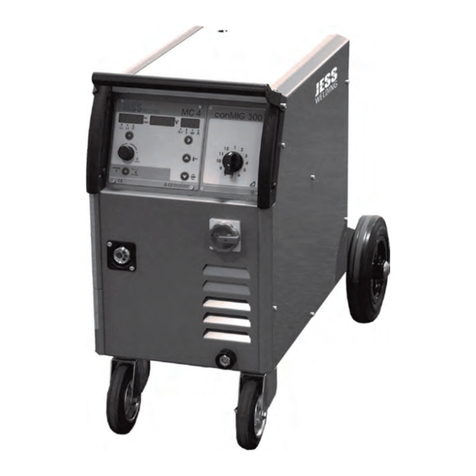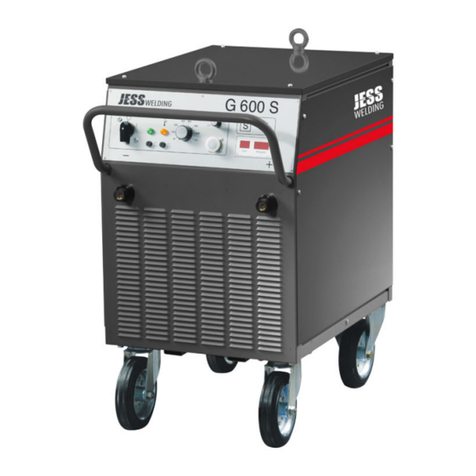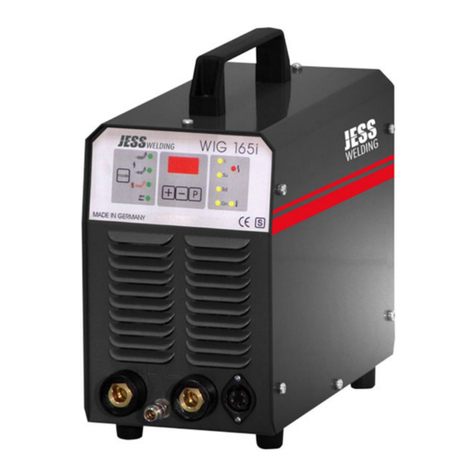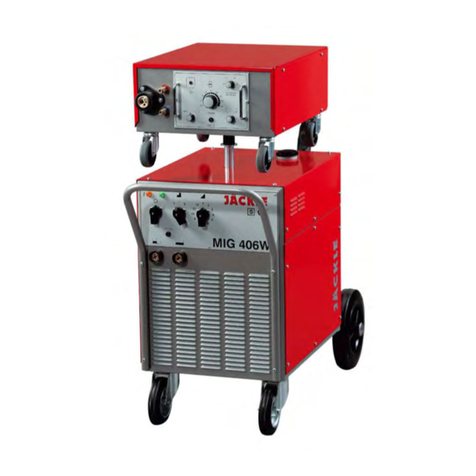
Power Plasma 2
Operating Manual Page 4
2.6 EMC and safety inspection
Apart from the instructions given in this operating manual, the general safety standards, in
particular the rules for prevention of accidents must be observed. The rules contain
additional information’s about the prevention of radiation, smoke, combustion, electric
shock, fire and explosion.
The rules are:
BGV A3 (electrical installations and operating supplies) and
BGR 500 chap. 2-26 (welding, cutting and related working processes).
Furthermore, we point out that in some operative ranges where, despite the observ-
ance of radiation limits, this welding unit can cause electromagnetic interferences
which are the responsibility of the user.
This means that in the domain of hospitals, for instance, the function of electro-
medical units, data-processing equipment and the like (ECG, PC etc.) may be impaired.
Before putting the welding unit into service, please make sure to inform the autho-
rities in charge of the above mentioned equipment.
If you wish to use the cutting unit in domestic areas, special precautions have to be taken
as well.
Adequate assistance in assessing the operative range and minimizing electro-
magnetic interferences (e.g. use of screening lines) may be obtained from the
Electromagnetic Compatibility Standards for Arc Welding Systems.
EN 60 974-10 (Electromagnetic compatibility EMC)
Safety inspection:
The owner/operator is obliged to have a safety inspection performed on the
machine at least once every 12 months.
Observe the relevant national and international standards and directives in
connection with the safety inspection.
More detailed information on safety inspections and calibration is available
from your regional or national service centre, who will be pleased to provide
you with copies of the necessary documents upon request
e.g.: EN 60974-4 (Safety, maintenance and inspection of arc welding equipment in use)


































